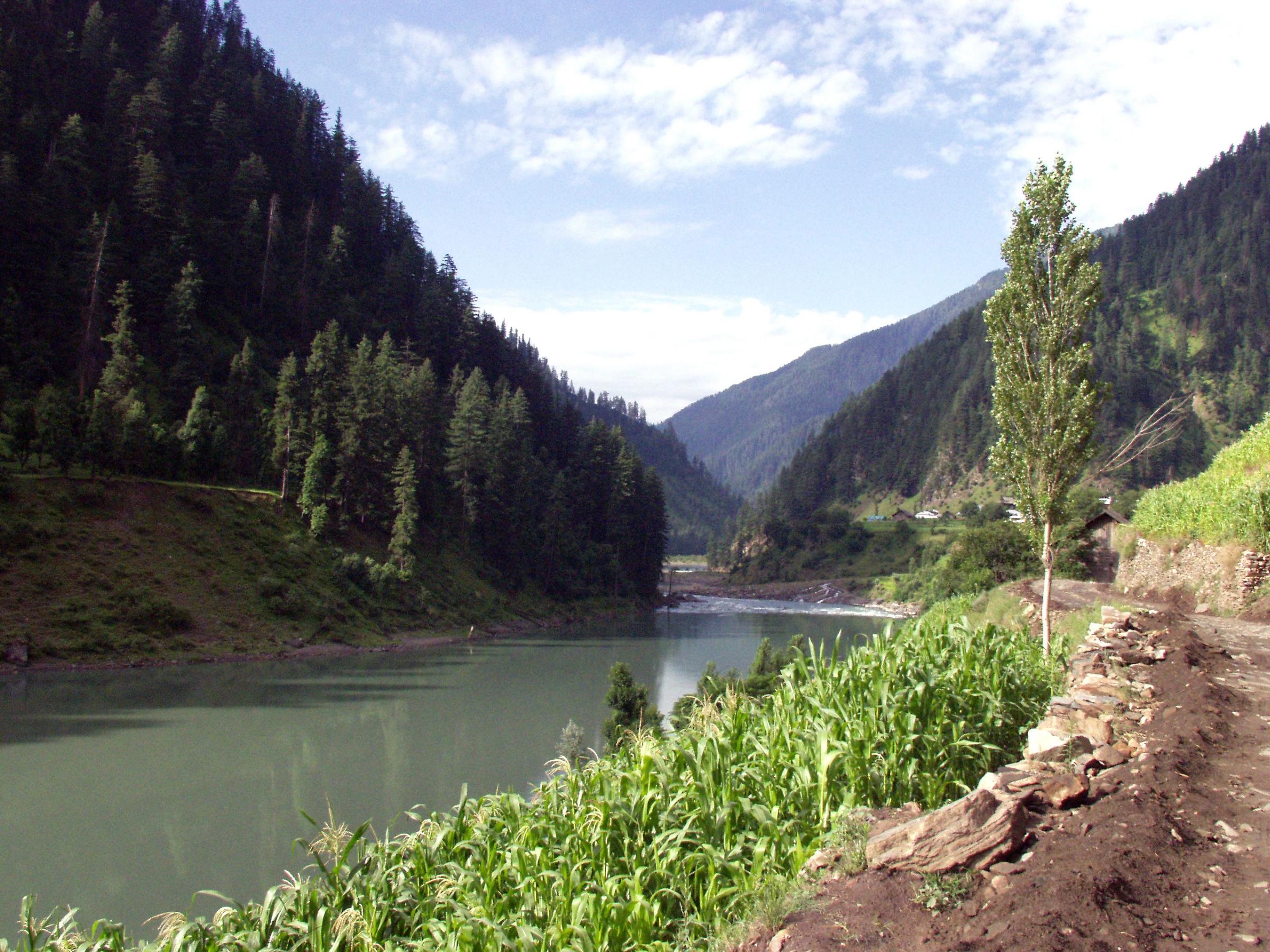River Jhelum

Religious Significance
River Jhelum was called Vitasta by ancient Indians in the Vedic times. The Kashmiri people (especially the Kashmiri pandits) worship the river (Vitasta) which is identified with Goddess Parvathi in the Hindu religion.
Many legends are associated with the name and origin of Jhelum river in Kashmir valley. According to the “Nilamata Purana”, Sage Kashyap drained the Satisar to put an end to the Jal Dev (water demon) who was harassing valley dwellers and killing them. So, the need for water to maintain life was felt.
The `pishaches’, originally inhabitants of Kashmir valley (name emerged from sage Kashyap’s name) used to hamper the meditation of Aryans, who approached Kashyap rishi for help. The sage requested Lord Shiva to prevail upon Goddess Parvathi to manifest herself in the form of river to cleanse them. Lord Shiva obliged and struck the ground near the abode of Neelanaga with his trident. The opening measured one vitasta, a measure of length equal to 12 angules, hence the name Vitasta. From this hole near the abode of Neelanaga on 13th day of the bright fortnight of Bhadrapada, Goddess Parvathi gushed forth in the form of a river, goes the legend. This entire episode is known as `vetha truvaha’.
Ecological Significance
The Jhelum is the main waterway of the valley of Kashmir.



Place of Origin: A spring called Verinag in south-eastern part of Kashmir
Length: 725 km
Confluence: Chenab at Trimmu (Jhang District in Pakistan)